有人说:STL的sort和手写的快排哪个效率更高呢?听说STL很慢的!考试时该用哪个呢?
下面我们就来验证一下哪种排序算法更高效
STEP1
先来做好准备工作,把几种排序算法的模板写好
STEP2
用 Google 的 benchmark 库测一下这几个排序的算法的渐进复杂度系数
这是插入排序的渐进复杂度是 0.16 N^2,以及系数的标准差是 0.07
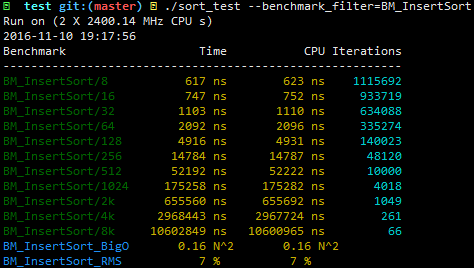
这是归并排序的渐进复杂度是 11.58 NlgN,以及系数的标准差是 0.03
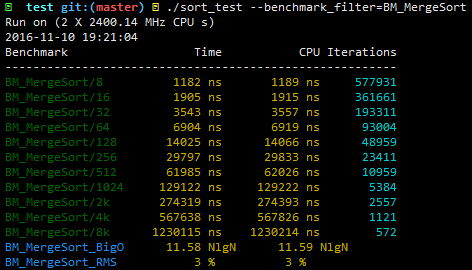
这是快速排序的渐进复杂度是 6.98 NlgN,以及系数的标准差是 0.02
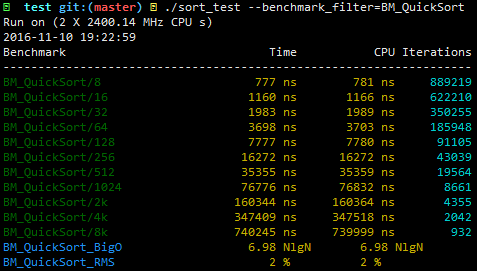
这是std :: sort 排序的渐进复杂度是 4.87 NlgN,以及系数的标准差是 0.02
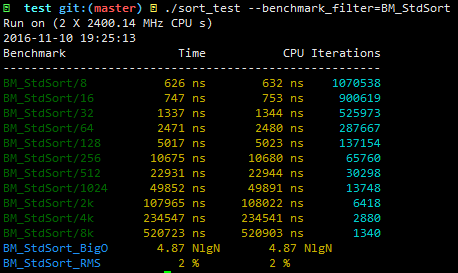
STEP3
摘一下标准库里的sort代码
std :: sort
template<typename _RandomAccessIterator>
inline void
sort(_RandomAccessIterator __first, _RandomAccessIterator __last)
{
typedef typename iterator_traits<_RandomAccessIterator>::value_type
_ValueType;
// concept requirements
__glibcxx_function_requires(_Mutable_RandomAccessIteratorConcept<
_RandomAccessIterator>)
__glibcxx_function_requires(_LessThanComparableConcept<_ValueType>)
__glibcxx_requires_valid_range(__first, __last);
if (__first != __last)
{
std::__introsort_loop(__first, __last,
std::__lg(__last - __first) * 2);
std::__final_insertion_sort(__first, __last);
}
}
STL里快排尾递归主逻辑
/// This is a helper function for the sort routine.
template<typename _RandomAccessIterator, typename _Size>
void
__introsort_loop(_RandomAccessIterator __first,
_RandomAccessIterator __last,
_Size __depth_limit)
{
while (__last - __first > int(_S_threshold))
{
if (__depth_limit == 0)
{
_GLIBCXX_STD_A::partial_sort(__first, __last, __last);
return;
}
--__depth_limit;
_RandomAccessIterator __cut =
std::__unguarded_partition_pivot(__first, __last);
std::__introsort_loop(__cut, __last, __depth_limit);
__last = __cut;
}
}
部分排序中使用堆排序
template<typename _RandomAccessIterator>
inline void
partial_sort(_RandomAccessIterator __first,
_RandomAccessIterator __middle,
_RandomAccessIterator __last)
{
typedef typename iterator_traits<_RandomAccessIterator>::value_type
_ValueType;
// concept requirements
__glibcxx_function_requires(_Mutable_RandomAccessIteratorConcept<
_RandomAccessIterator>)
__glibcxx_function_requires(_LessThanComparableConcept<_ValueType>)
__glibcxx_requires_valid_range(__first, __middle);
__glibcxx_requires_valid_range(__middle, __last);
std::__heap_select(__first, __middle, __last);
std::sort_heap(__first, __middle);
}
快排中的partion,这里用的是三分取中
template<typename _RandomAccessIterator>
inline _RandomAccessIterator
__unguarded_partition_pivot(_RandomAccessIterator __first,
_RandomAccessIterator __last)
{
_RandomAccessIterator __mid = __first + (__last - __first) / 2;
std::__move_median_first(__first, __mid, (__last - 1));
return std::__unguarded_partition(__first + 1, __last, *__first);
}
template<typename _RandomAccessIterator, typename _Tp>
_RandomAccessIterator
__unguarded_partition(_RandomAccessIterator __first,
_RandomAccessIterator __last, const _Tp& __pivot)
{
while (true)
{
while (*__first < __pivot)
++__first;
--__last;
while (__pivot < *__last)
--__last;
if (!(__first < __last))
return __first;
std::iter_swap(__first, __last);
++__first;
}
}
最后走优化的插入排序
template<typename _RandomAccessIterator>
void
__final_insertion_sort(_RandomAccessIterator __first,
_RandomAccessIterator __last)
{
if (__last - __first > int(_S_threshold))
{
std::__insertion_sort(__first, __first + int(_S_threshold));
std::__unguarded_insertion_sort(__first + int(_S_threshold), __last);
}
else
std::__insertion_sort(__first, __last);
}
结论
可以看出 std::sort 拥有更小的渐进复杂度系数
总结
首先,STL的sort 不仅仅是快排,所以你只是手写快排,哪怕是尾递归式的快排,也不会有它快!
它会先走快排主递归逻辑,但是递归深度是有限的,而且当子区间够小时,会走插入排序,我摘了标准库里几行代码,具体直接看代码就可以了。
另外,你可以看一下我写的几个排序算法和 STL 里的 sort 的对比数据:
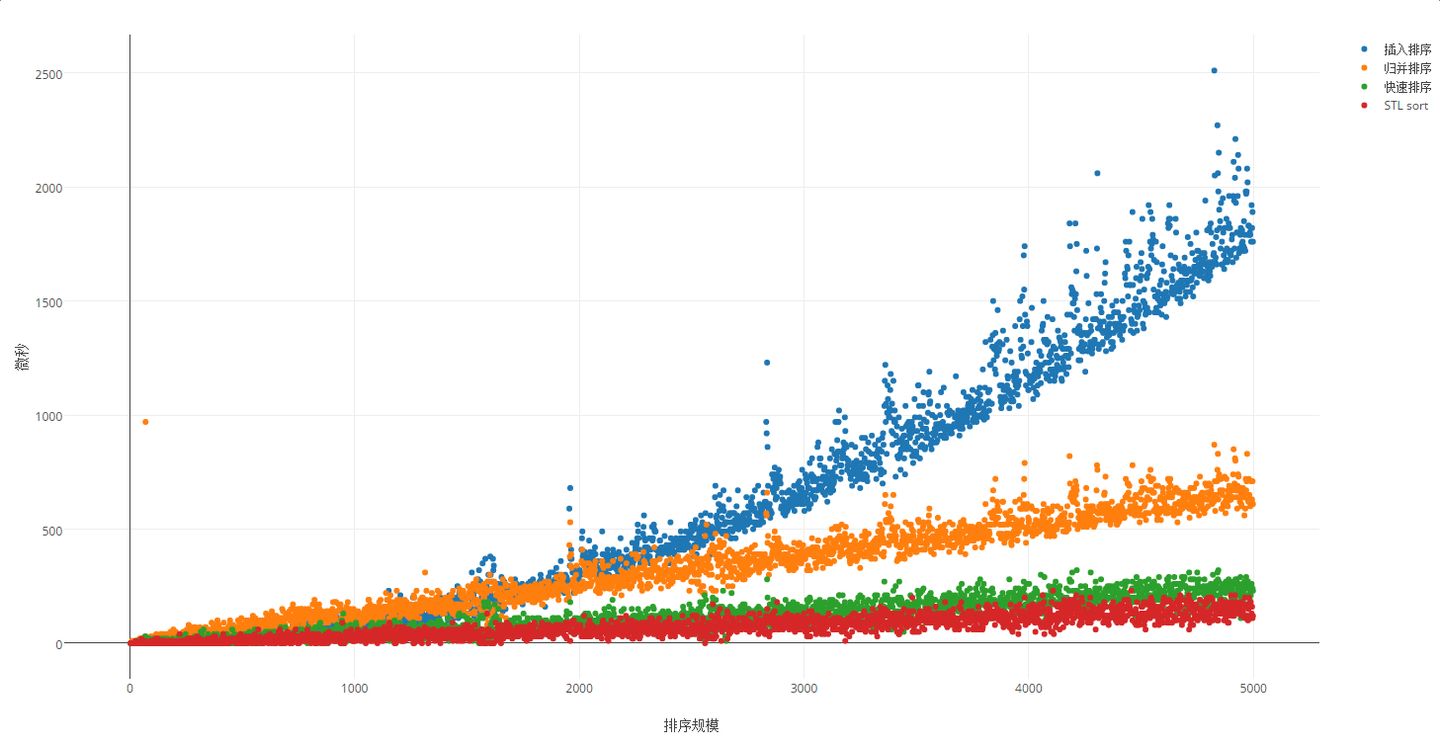


神蛙太强了
%%%
大佬,最后一张图咋弄的
Plotly | Make charts and dashboards online
%%%